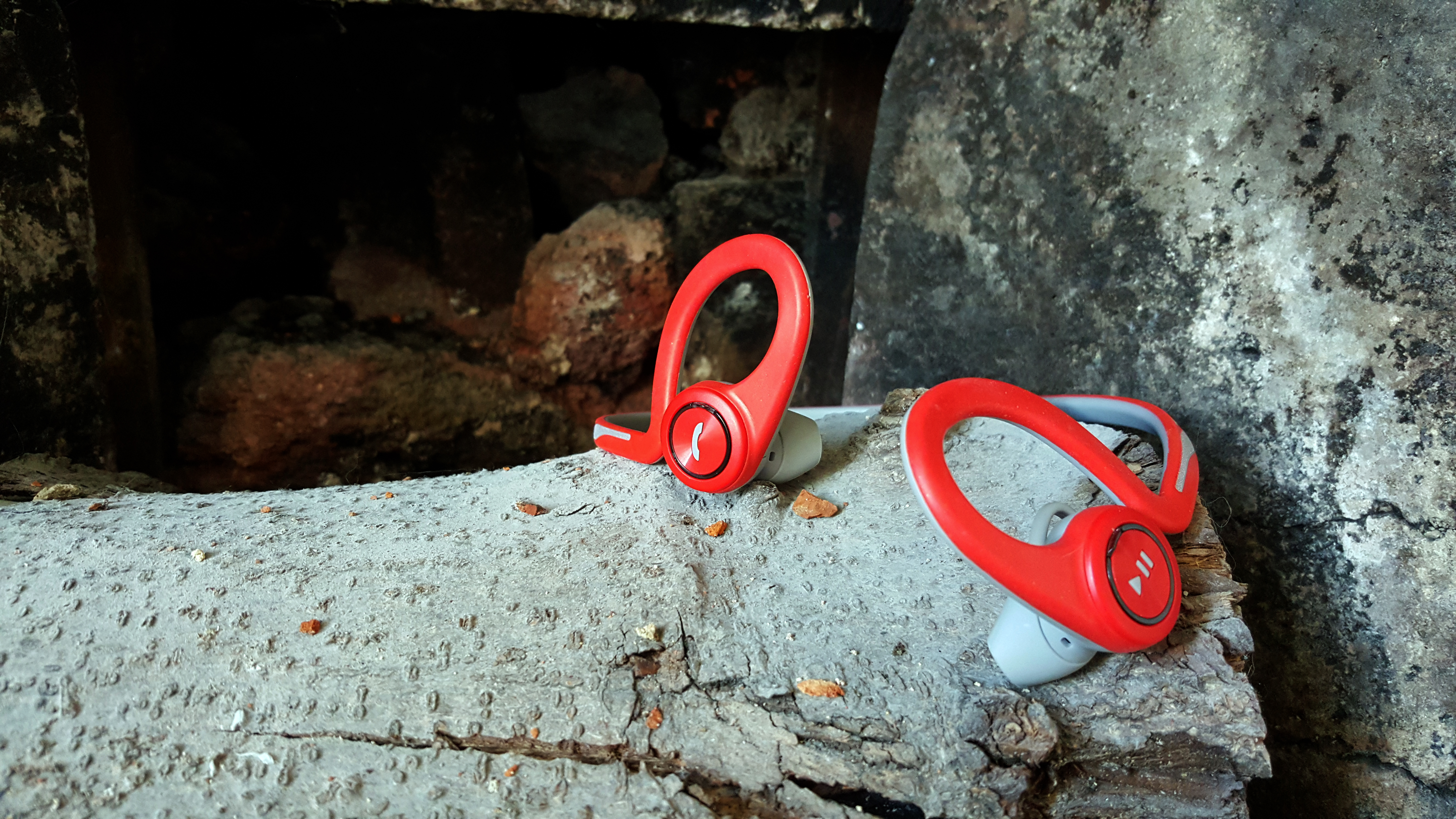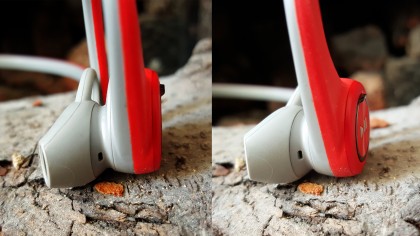These are the best Bluetooth running headphones I've ever used
And they're not even that expensive

It's been a rather lovely week in running terms. I've finally joined my local running club properly, my Parkrun times have started to tumble and I've been given full access to my full universe of running stats.
Let's start with some news we can all enjoy though: I've been using the Plantronics BackBeat Fit Bluetooth headphones for the last week...and they've been a revelation.
I get asked quite often: 'What are the best running headphones if you don't want to spend hundreds of pounds?' and I often feel quite sheepish that I don't have a great answer. The reason is that, as regular RMoTters will know, I have stupidly cavernous ears that spit out headphones, ones normal people can wear quite easily.

That led to me finding the JVC HA-ETR40 wired headphones and proclaiming I'd finally found a pair that don't fall out – and that's still the case.
But there's nothing better than a pair of wireless headphones when you're running. No need to worry about getting caught in wires and wondering where you're going to stick your phone so it's in range. And the supercool feeling of pressing a button and connecting to a magic musicbox is ace too.
Which is why the BackBeat Fits are such a joy to use – especially as initially I was terribly disappointed in the way they fit. These are over the ear style buds, looping around your lugs to stay in place.
Except they didn't. They fell in and out and needed to be constantly pushed back in over and over again, and as they're 'open' (so runners can hear pesky things like traffic about to drive into them) they don't sit snugly in your ear canal, which was irritating.
Sign up for breaking news, reviews, opinion, top tech deals, and more.
So I ripped them off at the end of the run, and squeezed the rubber loops really hard to see if I could cajole them into a shape that would sit around my ears more nicely.
And, mercy be, it worked. They slipped right in behind my ears and locked into place… and that's how they've been on every run for the last three weeks. Splendid.

It's not just the fit I'm enamoured with though – the sound quality is excellent too. Usually with running headphones you're forced to accept the stuff you're trying to listen to will be distorted through a tin can, translated by a cat and then vaguely approximated into your ears – which is fine when you're listening to Euro Trance music.
But it was a very pleasant shock when I found out I could hear subtle tones in my Spotify playlist, with more than a lick of bass present. The fit is also perfect – it's not tight, which means sweat will dribble in there more often, but as a result it's easier to clean the headphones.
This is because the BackBeat Fit sits, not fits, in the ear hole and a quick wipe will see these sweatproof wonders dry as a bone in no time.
They're obviously not perfect, because the powers that be would never be kind. They're a tiny bit on the large side, although far from overly chunky (if, like my stepmother, you've used Jabra's over the ear wireless headphones that were given free with a magazine subscription, the BackBeat Fit is much, much more compact and stylish).
There were also clearly a few crazy pills being passed around the design team at the Fit's inception as the volume down button is hidden.
You've got two large buttons on the side of the headphones: one to play or pause music, and one to answer calls. Then hidden in the ring surrounding those buttons is a protruding lip – pressing one side turns the headphones on and off, the other raises the volume.

It took me a very, very long time to work out that holding down the 'volume up' key was the method of lowering the audio level – I nearly deafened myself in that period. Given tapping the power key merely tells you the battery level, it would have made sense to put it there.
But that's really it in terms of criticism for a pair of headphones with a decent battery life, great sound quality and a strong lock on the ears when running. I was therefore shocked to see these can be bought for less than £60 in the UK, and $90 in the US – I was genuinely expecting well over £100 / $180.
If you're looking for a decent pair of running headphones (I admit, these aren't QUITE budget, but they're not far off) then the less-known name of Plantronics should be high on your list.
Making Runner G stronger and faster
It's been a little while since I updated you on Runner G as she prepares for her first 10k in September – and it's not good news I'm afraid. While we've been carefully upping her mileage each week (no more than 10% every two weeks, ideally) one of the common issues has struck: shin splints.
Thankfully, these seem to be mild and born mostly of excess pounding from the running, but it does highlight something a lot of people overlook, the importance of strength training.
Runner G is being good and using this week off to focus on making sure her legs and hips are up to the task of running – and it'll pay dividends come race day when she's able to make it to the line.
For most new runners, the simple act of just lacing up the trainers and getting out there is hard enough – and, dear lord, it really is. If you're only a few weeks or months into running you should be feeling superbly proud of yourself, no matter your distance, speed or fitness – I love the phrase 'you're lapping those on the couch'.
But strength training is a really helpful part of the puzzle too, bringing you extra speed, injury prevention and a nicer definition to those wobblier bits too. And it really doesn't have to be an extra effort, nor take up too much of your time. You can try some gadgets here (Jabra Coach is great for some cardio training, or Moov has an excellent 7 minute workout) – but there are some brilliant options on YouTube as well.
One of the my favourites for new runners is that from James Dunne, founder of Kinetic Revolution. It's a 30 day workout set, which puts some people off, but they're short, relatively easy and take you through the main points of correct form while helping strengthen common ailments new runners (and experienced ones too) can suffer.
I'm currently trying Coach Jay Johnston's eight week plan to get me in shape for the Royal Parks half marathon in October, and it too is daily, but nicely soft touch at the start.
Whichever way you do it, I implore you to at least look at strength training if you're just getting into running – it's not all insane squats, crunches and lunges, I promise.
The Google Analytics of running

I'm going to be doing a much bigger piece on this in the next week or two, but I've got to give a special mention to Smashrun this week – I know it was mentioned last column, but I've become obsessed.
The reasons are actually twofold: firstly, the amount of data and interactivity it brings is stupendous. You can see everything from speed to heart rate to distance over the time you've been running, which is why I spent three hours this weekend exporting all my runs from Adidas MiCoach into GPX files, then poring over the results to make sure they weren't duplicated with my Garmin results.
The result? Five full years of data, nearly every run I've done on there, with information on how I've progressed, which days I'm weakest on, how my heart rate has improved and more.
The worst part is the badges. I say worst, because I don't need more reasons to keep pushing on my stats – but now I'm running a very slow paced less-than-1km run at 6.55am every Friday just to keep my streak going.
But this is nerd stat heaven, and if you're like most runners, you won't be able to stop exploring once you've opened Pandora's Box.
If you've got any tips, tech you want tested out or just want to mock me, I'm @superbeav on Twitter, and you can see my stumblings on Strava too.
- If you want to see more data, follow me on Smashrun - if you want to sign up, please use this link - once you see the service, you'll work out why...
- Read the rest of the Running Man of Tech story here

Gareth has been part of the consumer technology world in a career spanning three decades. He started life as a staff writer on the fledgling TechRadar, and has grew with the site (primarily as phones, tablets and wearables editor) until becoming Global Editor in Chief in 2018. Gareth has written over 4,000 articles for TechRadar, has contributed expert insight to a number of other publications, chaired panels on zeitgeist technologies, presented at the Gadget Show Live as well as representing the brand on TV and radio for multiple channels including Sky, BBC, ITV and Al-Jazeera. Passionate about fitness, he can bore anyone rigid about stress management, sleep tracking, heart rate variance as well as bemoaning something about the latest iPhone, Galaxy or OLED TV.